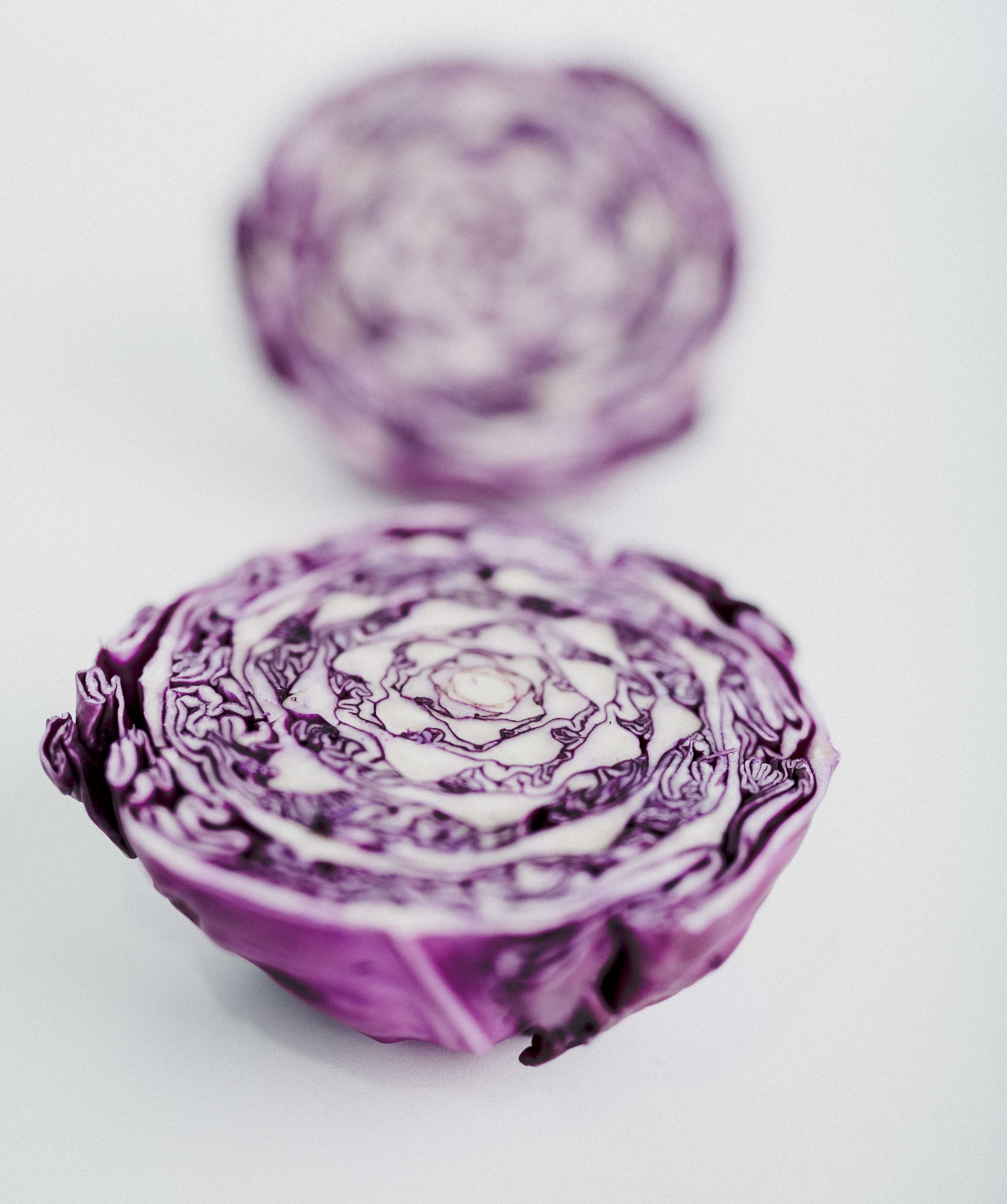Which cabbage is the healthiest: Red cabbage vs Green cabbage

Why you should eat more red cabbage
Red cabbage also known as purple cabbage is a dark purplish cruciferous nutrient-dense vegetable that is consumed both raw and cooked. It belongs to the same family as broccoli, cauliflower, Brussel sprouts, green cabbage, kale and other brassica family vegetables.
Compared to green cabbage heads, red cabbage tastes slightly peppery. Red cabbage heads are denser but smaller in size than green cabbage heads. The purple color is a result of the pH levels of the soil in which the red cabbages are planted and a result of the pigment produced by anthocyanin it contains.
Green cabbages usually take a round or an oval shape. They have a light green or whiter soft inner layer of leaves, which are covered with a harder and darker green outer layer of leaves.
They’re both very low in calories and high in fiber and nutrients.
Compared to green cabbage, red cabbage has a higher nutritional content of cancer-fighting flavonoids, vitamins, and antioxidants which boost your bone, teeth, eye, and immune health. It is believed that flavonoids present in red cabbage help in weight loss by releasing hormones capable of metabolizing fat and suppressing appetite. Researchers show that red cabbage also fights against arthritis and inflammation thanks to its strong phytonutrient content.
Apart from these, consuming purple cabbage also has innumerable health benefits, some of which are listed below.
Health Benefits of red cabbage
- Great for digestion
Red cabbage is low in calories and high in dietary fiber, thus, it effectively aids in the digestion process. Eating cabbage can prevent stomach ailments such as indigestion and constipation. - Maintains blood pressure
Regular consumption of red cabbage can benefit people having high blood pressure. Cabbage has higher levels of potassium, which is known to regulate and maintain blood pressure in the heart. Therefore, having this nutrient-dense vegetable can also prevent cardiovascular diseases. - Good for skin
This variant of cabbage is rich in antioxidants, and therefore, is great for your skin. Antioxidants help in keeping your skin youthful for a long time and prevents the appearance of fine lines and wrinkles. Also, purple cabbage is filled with the goodness of vitamin C which is important for keeping the skin glowing and radiant for a long time. - Fight Inflammation
Purple cabbage may help fight inflammation, which is thought to contribute to many diseases. Red cabbage has sulfur-containing compounds found in many cruciferous vegetables, that helps decrease inflammation in our bodies.
- Improves immunity
Red cabbage has more vitamin C than orange, contains carotenoids and flavonoids antioxidants. Vitamin C, vitamin A and other antioxidants present in cabbage improve and strengthen your immune system. It helps in flushing out toxins from the body and therefore improves your metabolism. Vitamin A helps in improving your eyesight as well. - Strengthens bone and muscle
Eating raw cabbage can help in strengthening your bones, and preventing joint pain and inflammation. It contains vitamin K, potassium as well as smaller amounts of calcium, manganese, and zinc that help in improving the functioning of bones and muscles. - Promote heart health
Purple cabbage contains anthocyanins, making it an excellent source of this heart-healthy compound. Diets high in anthocyanins, like those found in red cabbage, are linked with lower blood pressure and may prevent heart disease
- May aid in Weight Loss
Red cabbage is a rich source of dietary fiber and has fewer calories. Fiber intake helps increase satiety and reduces energy intake. Dietary fibers ensure that you stay satiated for a longer time by slowing down the digestion process. This helps in preventing hunger pangs and food cravings, helping in weight loss.
- Easy to add to your diet
Red cabbage is an incredibly versatile vegetable and easy to incorporate into your diet. This versatile vegetable can be added to soups, stews, salads, and coleslaw. It’s delicious raw, steamed, sautéed, and fermented. It retains the most nutrients when it’s eaten raw, but is still highly nutritious when cooked. It also offers an antioxidant-rich and visually appealing alternative to green cabbage in coleslaw.
Go ahead and enjoy some red cabbage in your diet. They are available in a supermarket or grocery store near you.
I mostly prefer them raw in a salad and also sautéed in a mix of green cabbage.
How do you like your red cabbage?
https://www.healthline.com/health/food-nutrition/red-vegetables
https://www.webmd.com/diet/health-benefits-red-cabbage

